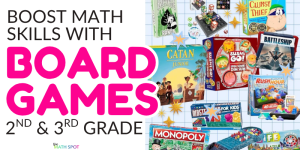This post contains affiliate links. This means that when you make a purchase, at no additional cost to you, I will earn a small commission.
When it comes to fact fluency it can be easy both to over-simplify *and* to over complicate. Having a clear plan with fact fluency materials at the ready can simplify the task of assessing, instructing and practicing math facts.

What Fact Fluency Materials Should You Have On Hand?
You will need to develop a system that includes the following:
- Materials to Assess Fact Fluency
- Materials to Track Assessment Data Over Time
- Materials to Deliver Fact-Fluency-Related Instruction
- Materials to Practice Fact Fluency
For each of these categories, you will create a folder or binder. The four folders can then be stored together in one magazine holder file container.
Materials For Assessing Fact Fluency
Your building or district may provide you with materials to assess fact fluency, but, if not, you are free to grab and use my assessment found within this blog post (it’s free).
Set up a two-pocket folder by having your master copies of all of your fluency assessments on one side of the folder. On the other side of the folder, have ready your next few assessments copied and paper clipped together. This will save you trips to the copier because by copying your materials for the next 3-4 assessments you will be prepared for the next month (or more!)
When your students finish taking their assessments you will also need a place to store these materials. You could put these materials directly into your students’ work folders (also a two-pocket folder) on the “completed” side or you can place them in a tab behind your students’ name in a 3-ring binder designated as your assessment binder.
If you don’t want to hole-punch each and every assessment to put it into a 3-ring binder you can also add a paper protector behind each student’s name so you can quickly tuck them away.
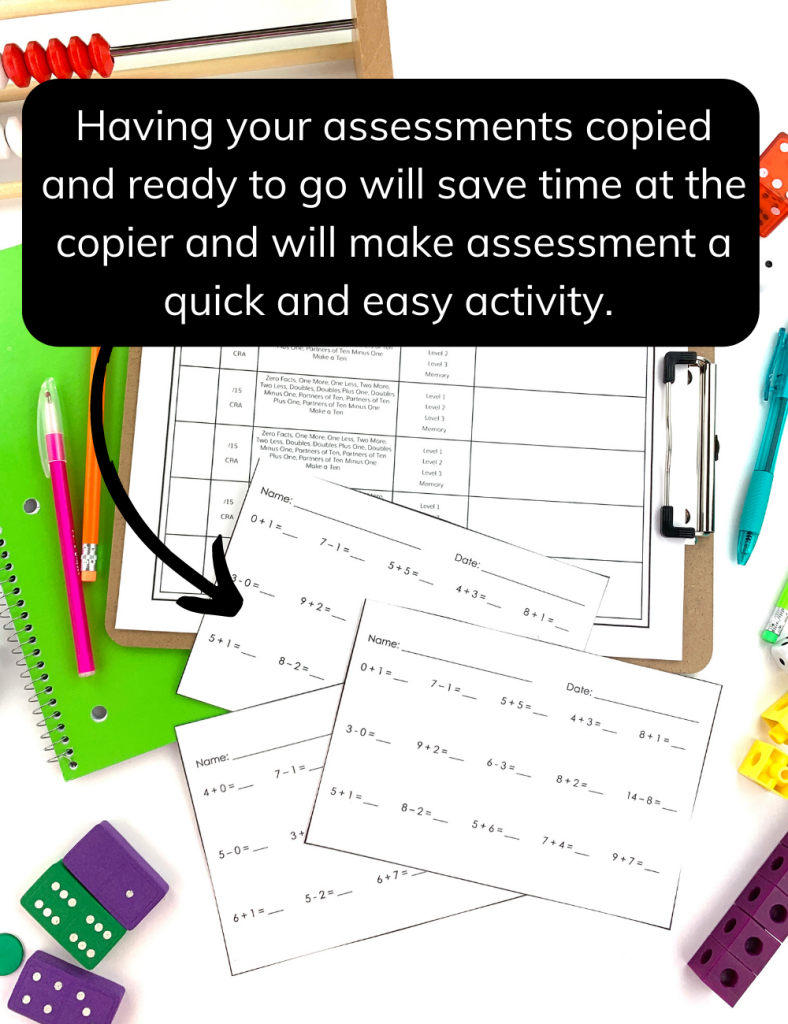
Materials for Tracking Student’s Fact Fluency Progress Over Time
After your students take the assessment, you will want your fact fluency materials to include a place to record their results so that you can determine the next steps in instruction and also see and demonstrate progress over time. This can be incredibly helpful when you are attending student data meetings- you won’t have to recreate the wheel or pull anything together, you’ll just grab your binder and go!
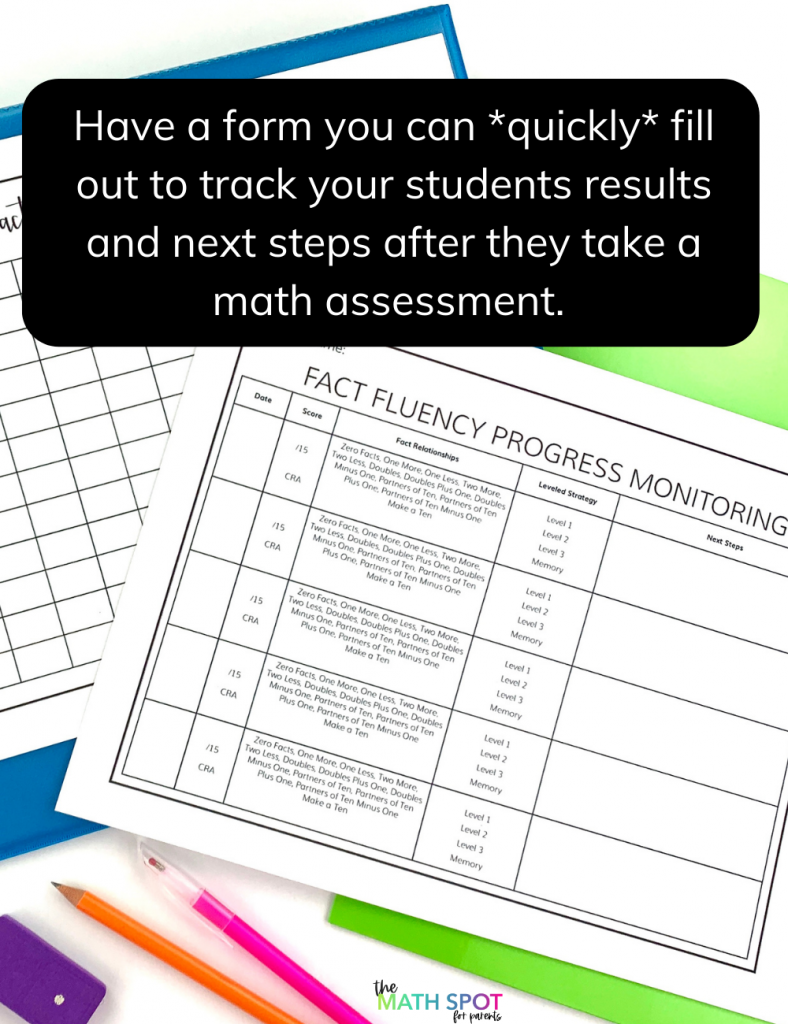
The system you use for long-term tracking is up to you. I have used multiple systems in the past each with their own upsides and downsides.
The form in the picture to the right is a part of my free strategy and assessment guide and you are welcome to grab it! This form is designed so that each student has their own form and you can fit up to 10 assessments on the front and back. For each assessment, you would list your student’s score as well as make notes about what types of facts they were successful or still working on that correlates with the assessment. There is also space for additional notes and observations.
Another system I have enjoyed in the past is a simple bar graph that my students filled out each week as they completed their assessments. It was a quick and easy way to see their growth as they became more confident with a variety of types of problems, strategies, and facts.
Materials to Deliver Fact-Fluency-Related Instruction
Much of your student’s fact fluency instruction will be built into your “regular” units and standards. For example, when you are ready to move your students from “counting all” to “counting on” you will likely teach a unit on this strategy.
At other times, you may want to conduct a separate fluency warm-up or routine that will hit a specific fact type. For example, if you notice that you have several students who don’t fluently know their +1 facts, you could play a warm-up game where you provide your students with a number (5) and your students say “one more” than that number (6). Then, quickly, your students will write an equation on a whiteboard that matches the problem they just solved (5 + 1 = 6).
If you have a collection of these fact fluency materials including units, warm-ups and routines that you like to draw from, stick them into your third two-pocket folder so that you have them at the ready!
Units such as “Partners of Ten“, “Fact Families“, “Make a Ten Addition“, and “10 More/10 Less” will all boost your students’ fact fluency skills.
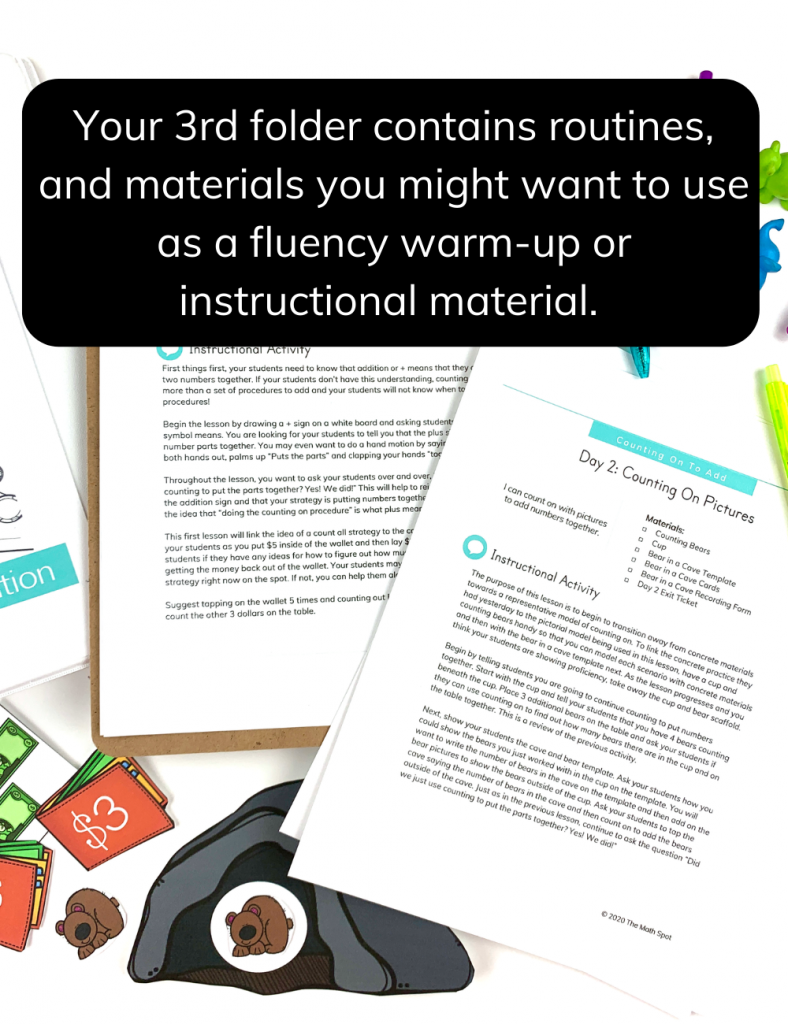
Many books found on Amazon also include fact fluency activities that you can quickly pull from. Math Fact Fluency by Jennifer Bay-Williams includes multiple easy-to-use activities that will boost your students’ fact fluency.
Fact Fluency Materials for Practice
After you have instructed or provided a structure for your students to understand different number relationships and math facts, your students will need an abundance of practice to help these facts move to long-term memory so that they are able to quickly and flexibly use strategies and access these facts.
In your last folder, have fact fluency games that your students can play on their own or with a partner to practice their math facts. Again, consider having your master copies on one side of the folder and a number of games already copied on the other side of the folder. You can switch these games out every few weeks!
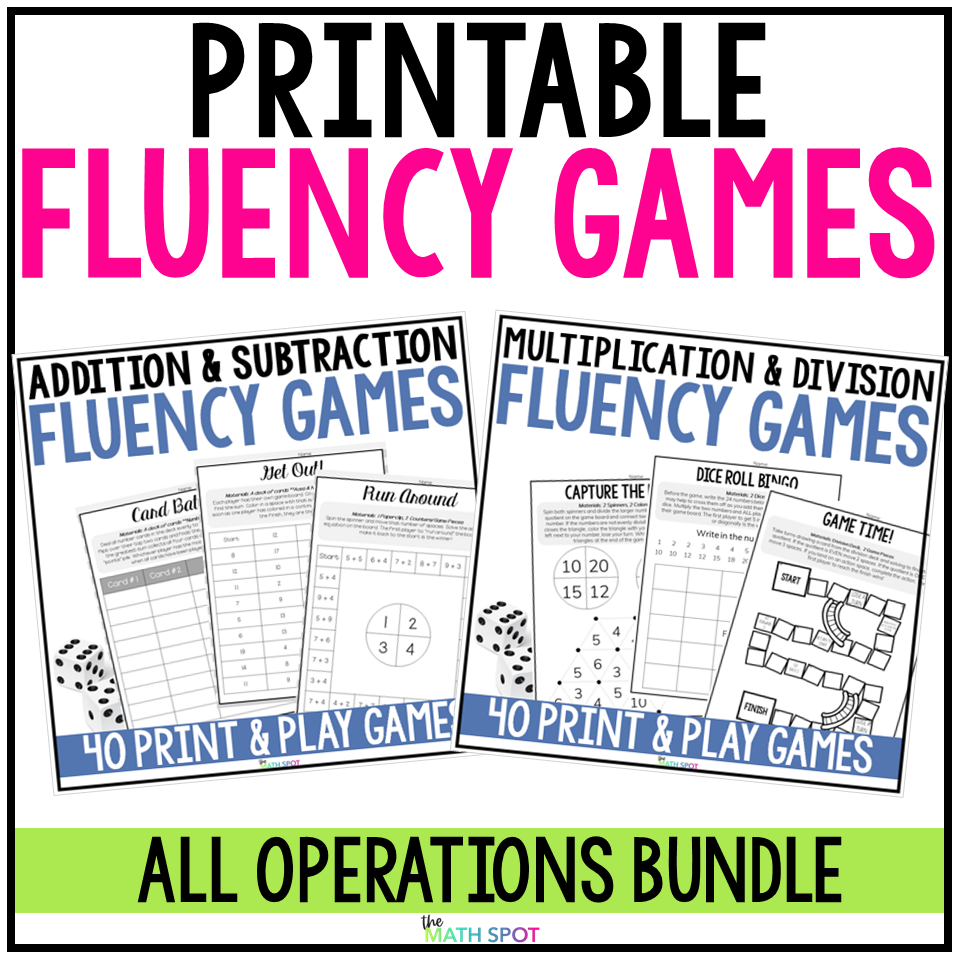
This set of print-and-play fact fluency games will provide your students with 80 games to play to practice addition, subtraction, multiplication and division facts this school year.
Each game can be played with a math spinner, dice, playing cards or dominoes. Have those 4 materials on hands and you will be able to get your students up and running with a game in no time at all!
The games are engaging and fun so your students will be getting a ton of fact practice without breaking a sweat.


